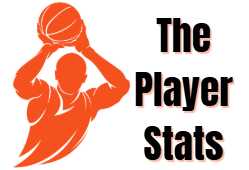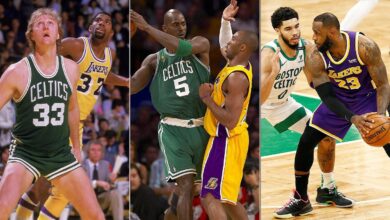Strategic Crossroads: East vs West Philosophies in the NBA

In the evolving chessboard that is the NBA, the strategic differences between the Eastern and Western Conferences remain both stark and subtle. The recent Dallas Mavericks vs Boston Celtics matchup provides a compelling case study to dissect these divergent philosophies. A deep dive into the player stats, offensive patterns, and rotational decisions illuminates the contrasting blueprints each conference prefers. From the Mavericks’ heliocentric offense centered around Luka Dončić to the Celtics’ balanced, two-way approach, the game highlighted more than just talent—it spotlighted two competing strategic ideologies.
Contents
Western Conference Tendencies: Star-Centric Fluidity
Historically, the Western Conference has gravitated towards offensive dynamism, with a premium on star isolation and floor spacing. The Dallas Mavericks epitomize this approach. Luka Dončić serves as both the engine and conductor of the Mavs’ offense, commanding one of the highest usage rates in the league. Against the Celtics, Dončić posted a stat line of 32 points, 9 rebounds, and 8 assists, underscoring his centrality to Dallas’s scheme.
Dallas employed a heavy dose of spread pick-and-rolls, with Dončić initiating high screens to either attack downhill or force switches to exploit mismatches. This tactic is emblematic of the West’s reliance on superstar creation. The Mavericks’ offensive rating sees a sharp drop when Dončić is off the floor, illustrating the fragility of star-centric structures.
Complementing Luka, Kyrie Irving added 25 points and 6 assists, operating as a secondary creator. His usage came in spurts—largely when Dončić rested or when the defense overloaded the strong side. The dual-guard dynamic provided flexibility but lacked systemic rhythm compared to Boston’s offensive cohesion.
From a strategic analyst’s perspective, Dallas demonstrated classic Western Conference tendencies:
- Emphasis on ISO efficiency: Dončić and Irving combined for 40+ isolation possessions, far above league average.
- Perimeter-centric offense: 45% of their field goal attempts came from beyond the arc, relying on shooters like Tim Hardaway Jr. (3-of-8 from three) to keep defenses honest.
- Switch-heavy defense: Inconsistent defensive rotations, particularly on weak-side help, were evident as Boston found open corner shooters frequently.
This model is effective but volatile—dependence on shot-making and individual brilliance leaves minimal margin for error.
Eastern Conference Philosophies: Structured Versatility and Defensive Cohesion
In contrast, the Boston Celtics showcased a more structured, defense-first ideology common in the East. Their philosophy aligns with strategic concepts such as “defensive layering” and “offensive redundancy”—designing a system where multiple players can create, defend, and switch fluidly.
Against Dallas, Boston displayed exceptional discipline, holding the Mavericks to just 102 points, well below their season average. Jayson Tatum led with 29 points and 10 rebounds, but his usage was more situational than dominant. He operated within the flow—cutting off-ball, working off screens, and exploiting secondary mismatches.
Meanwhile, Jaylen Brown chipped in with 24 points and 7 rebounds, playing a dual role as a slasher and defender. Importantly, Derrick White and Jrue Holiday—each with over 4 assists and multiple steals—acted as glue pieces, maintaining ball movement and stifling Dončić’s drives with timely double-teams.
Boston’s Eastern-flavored approach was defined by:
- Ball movement and spacing: They recorded 27 assists on 39 made field goals, showcasing a willingness to pass up good shots for great ones.
- Defensive versatility: With switchable defenders across positions 1-4, Boston forced Dallas into late-clock decisions and low-percentage shots.
- Paint protection by committee: While lacking a traditional rim protector, Al Horford and Kristaps Porziņģis combined for 4 blocks and altered numerous drives, demonstrating strategic positioning over sheer verticality.
Unlike Dallas, Boston does not rely on one player to tilt the defense. Their offense is algorithmic—each read prompts the next decision, creating a recursive loop that disorients scrambling defenses.
Philosophical Implications and Strategic Takeaways
What emerges from this matchup is a broader narrative about conference-level identity. The West, historically brimming with high-octane offenses, fosters systems that orbit their stars. These systems, while potent, are susceptible to targeted disruption—when a star struggles, the offense sputters. The Mavericks’ 12-point fourth-quarter drought in this game highlights that vulnerability.
On the other hand, Eastern Conference teams like Boston build redundancy into their schemes. They invest in multi-positional defenders, prioritize switchability, and cultivate offensive balance. This makes them more adaptable in playoff environments, where scheming can neutralize singular threats.
Furthermore, the Celtics’ performance demonstrates a philosophical belief in connective playmaking—valuing players who can dribble, pass, and shoot, even in limited doses. This fosters decision-making under duress, something that stood out starkly when Dončić was blitzed and the Mavericks’ secondary creators failed to capitalize.
Statistical Echoes of Strategy
The box score echoes these strategies:
- Dallas: 10 turnovers, 20 isolations, 24 three-point attempts in the first half alone, but only 4 team assists in the final quarter—indicative of stagnation when individual creation stalls.
- Boston: Shot 38% from three, had five players in double figures, and forced 15 deflections—data that reflects a team built on systemic execution and defensive anticipation.
Advanced analytics further cement the contrast:
- Boston’s assist-to-turnover ratio: 2.7 (elite).
- Dallas’s defensive rating in transition: 122.5 (poor), as their floor balance often collapsed post-missed threes.
- Boston’s half-court offensive efficiency: 1.09 points per possession, compared to Dallas’s 0.98—highlighting the dividends of collective action over isolation reliance.
The Strategic Crossroads: East vs West in 2025 and Beyond
As the league continues to evolve toward positional fluidity and switch-heavy defenses, the Celtics’ model appears more scalable. The Mavericks, while dangerous, may need to diversify their offense and invest in more two-way wings to thrive deep into postseason battles. In essence, the East’s philosophy aligns more closely with playoff survival: slower pace, tactical flexibility, and layered defense.
Yet, it’s crucial to acknowledge the cyclical nature of strategy. The West’s improvisational brilliance—when executed by elite talent—can dismantle even the best systems. The balance of power may ultimately hinge not on the superiority of one philosophy but on which team better blends both approaches.
In the end, the Celtics vs Mavericks showdown wasn’t just a regular-season game. It was a strategic crossroads—a microcosm of the philosophical tug-of-war between East and West. And in this chapter, structure beat spontaneity. But in basketball, as in war, the next battle could tell a very different story.





